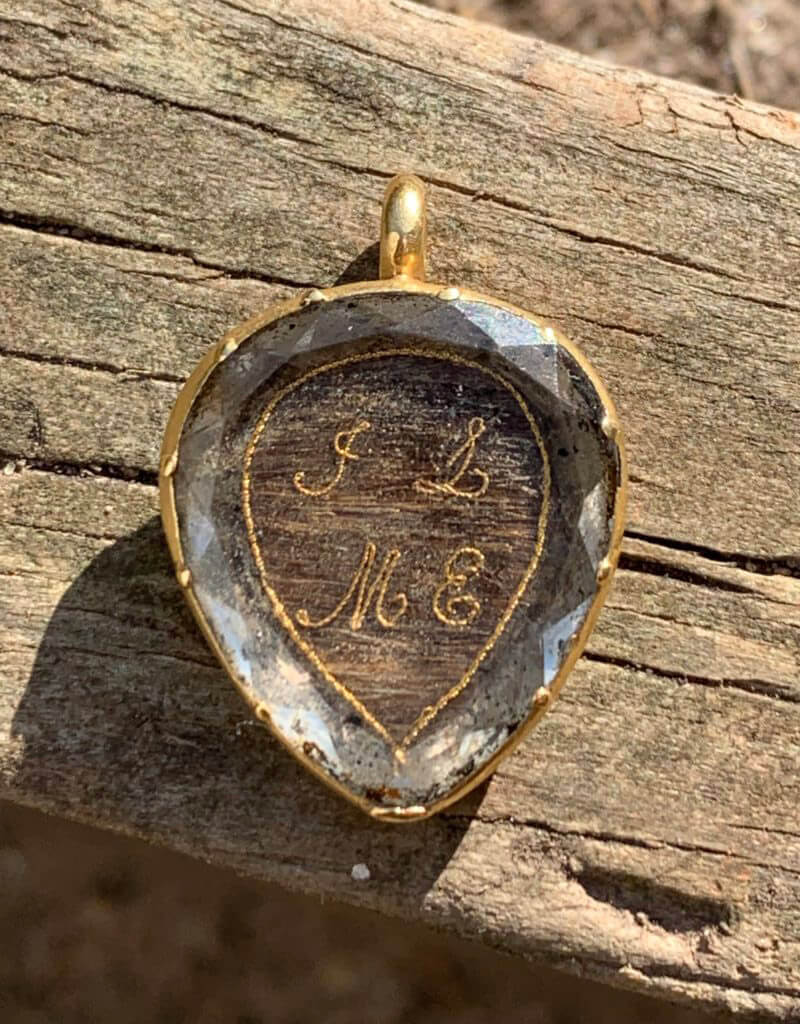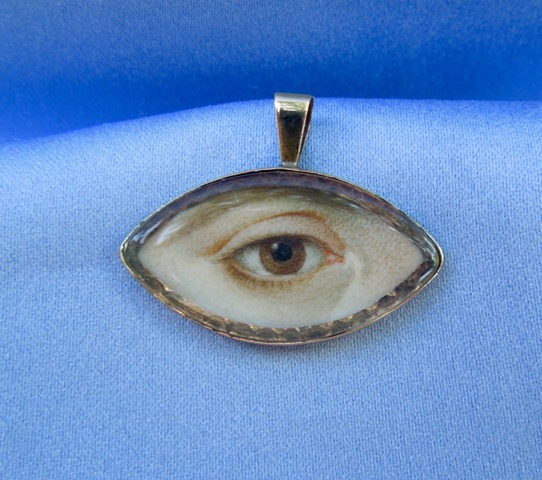Early 18th Century Rectangular Pendant
Early 18th century jewels are easy to define due to the rosette shape of the bezel. This is not something which had a hard date of introduction when it comes to design, however, it makes it clear for the collector to know that between 1700 and 1761, this was a style in use as a popular mode of fashion.
But why was it popular and how did it permeate across separate geo/political landscapes? This was a style that filtered through Europe, and as we know from learning of memorial jewels, there needs to be a catalyst for the inception of a certain style.
With this particular style, we can see the Baroque influence filter into the jewel. WIthout the benefits of the jewellery construction being of machinery, hand-worked jewels were built from the fundamental guilds and crafts to create the standardised style. With the higher production levels that machinery had to offer in the latter 18th century (with the industrial revolution), refinement to the style carried through into the early 19th century with machine-turned gold-work. The reverse of bezels, however, was something that was used to expound upon the jewel of the 18th century and project it forward. The style carried across rings and pendants; as a housing for a crystal, gem or hairwork, this was the style of choice.
Next, there is the gold cipher of the initials in the jewel’s interior dedication. From the 1680s, this was something that became standardised upon sentimental jewels and is not something considered directly ‘mourning’. What we have to realise is that the presentation of the name was in relation to much of the changing humanist sense of the ‘self’; here we see a representation of the person in popular culture that facilitated a mobile and upward-moving strata of society, where previous times held a people locked into guilds or family industry. Much of this is the religious change that was bought upon by the reinstatement of Charles II and the re-establishment of the Anglican Church, as well as foreign influences and scientific discoveries.
Traditional realms of thought were challenged and pieces like this grounded the ‘self’ as a jewel for identity in a vastly growing world.
Further Reading
> Louis XIV Memento Mori Intaglio Ring
> Stuart Crystal Heart Pendant with Angels and Crown









